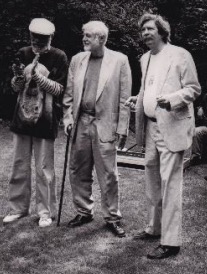Edinburgh Napier cataloguing archivist Alison Scott contributes to the Counterculture Studies journal
https://ro.uow.edu.au/ccs/vol3/iss1/1/
Abstract
The early to mid-1960s bore witness to the birth of the Underground, a loose collection of writers, artists and activists who were united in their opposition to mainstream culture, and in particular to consumerism and war. Beginning in the United States, where the Vietnam War galvanized youth protest, and building on spirit of Beat Generation, who rebelled against the conformity of life during the previous decade, the Underground spread across the Atlantic to the UK and Europe, later becoming a global phenomenon.
During the 1960s, editors, artists and activists forged extensive networks across the globe through letters, underground newspapers and little poetry magazines, much of which was printed on cheap paper, with little regard for posterity. By the late 1960s, there was a burgeoning international underground, which is underscored by the life and work of the artists, writers and editors discussed in this collaborative article. Jeff Nuttall (1933-2004) was based in the UK but created networks across the globe through the editorship of his little poetry magazine; Dave Cunliffe (1941-), based in the north of England, published works by US activists and poets in his poetry magazines and books; Jim Haynes (1933-), an American based for many years in Edinburgh and London, connected writers and artists across the world through the Arts Lab and as an editor of IT, Europe’s first underground newspaper; and Harvey Marshall Matusow (1926-2002), worked in underground newspapers, first in New York, and then London. As the archives of these underground participants attest, the counterculture was a vibrant international phenomenon, albeit one that was slow to recognise the importance of women in the counterculture.

